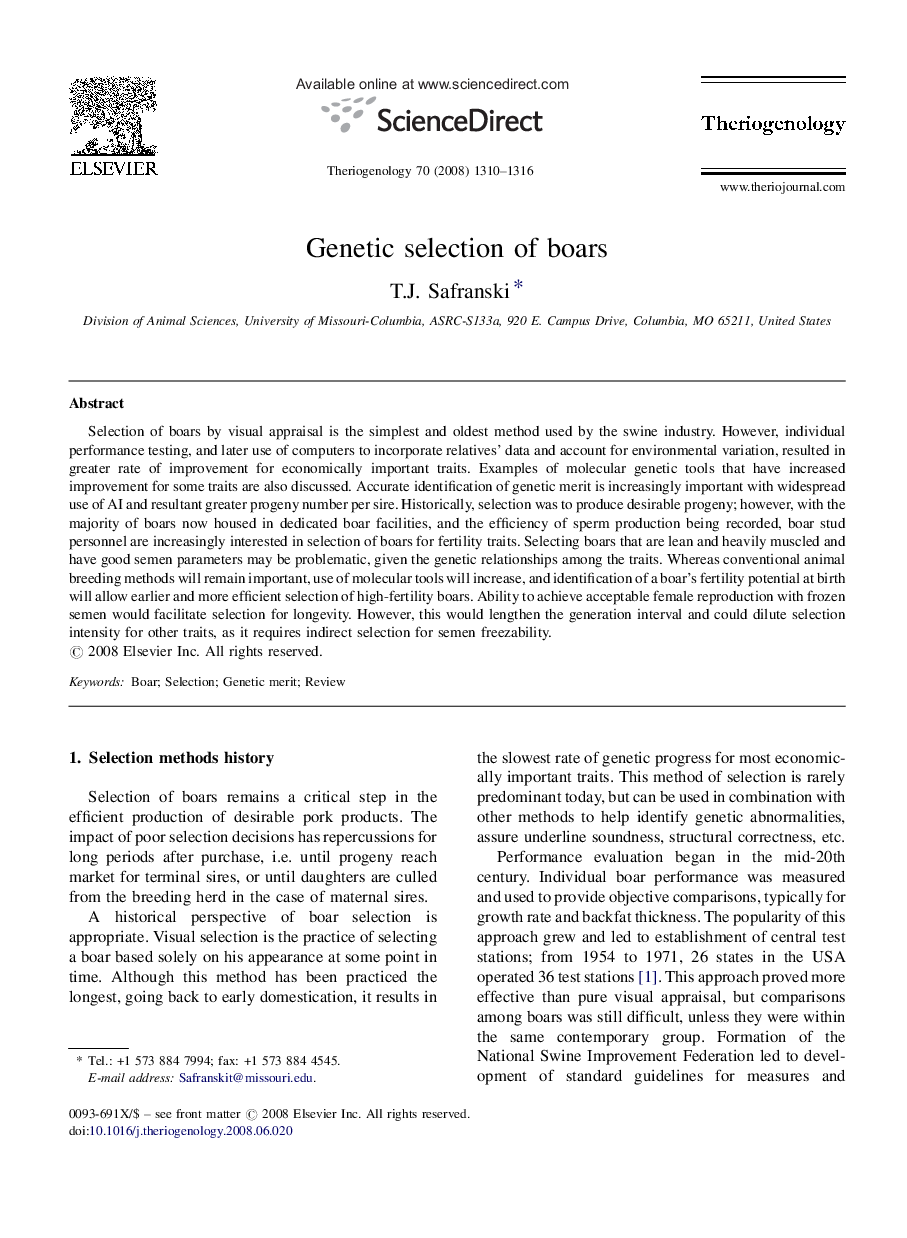| Article ID | Journal | Published Year | Pages | File Type |
|---|---|---|---|---|
| 2098158 | Theriogenology | 2008 | 7 Pages |
Selection of boars by visual appraisal is the simplest and oldest method used by the swine industry. However, individual performance testing, and later use of computers to incorporate relatives’ data and account for environmental variation, resulted in greater rate of improvement for economically important traits. Examples of molecular genetic tools that have increased improvement for some traits are also discussed. Accurate identification of genetic merit is increasingly important with widespread use of AI and resultant greater progeny number per sire. Historically, selection was to produce desirable progeny; however, with the majority of boars now housed in dedicated boar facilities, and the efficiency of sperm production being recorded, boar stud personnel are increasingly interested in selection of boars for fertility traits. Selecting boars that are lean and heavily muscled and have good semen parameters may be problematic, given the genetic relationships among the traits. Whereas conventional animal breeding methods will remain important, use of molecular tools will increase, and identification of a boar's fertility potential at birth will allow earlier and more efficient selection of high-fertility boars. Ability to achieve acceptable female reproduction with frozen semen would facilitate selection for longevity. However, this would lengthen the generation interval and could dilute selection intensity for other traits, as it requires indirect selection for semen freezability.
